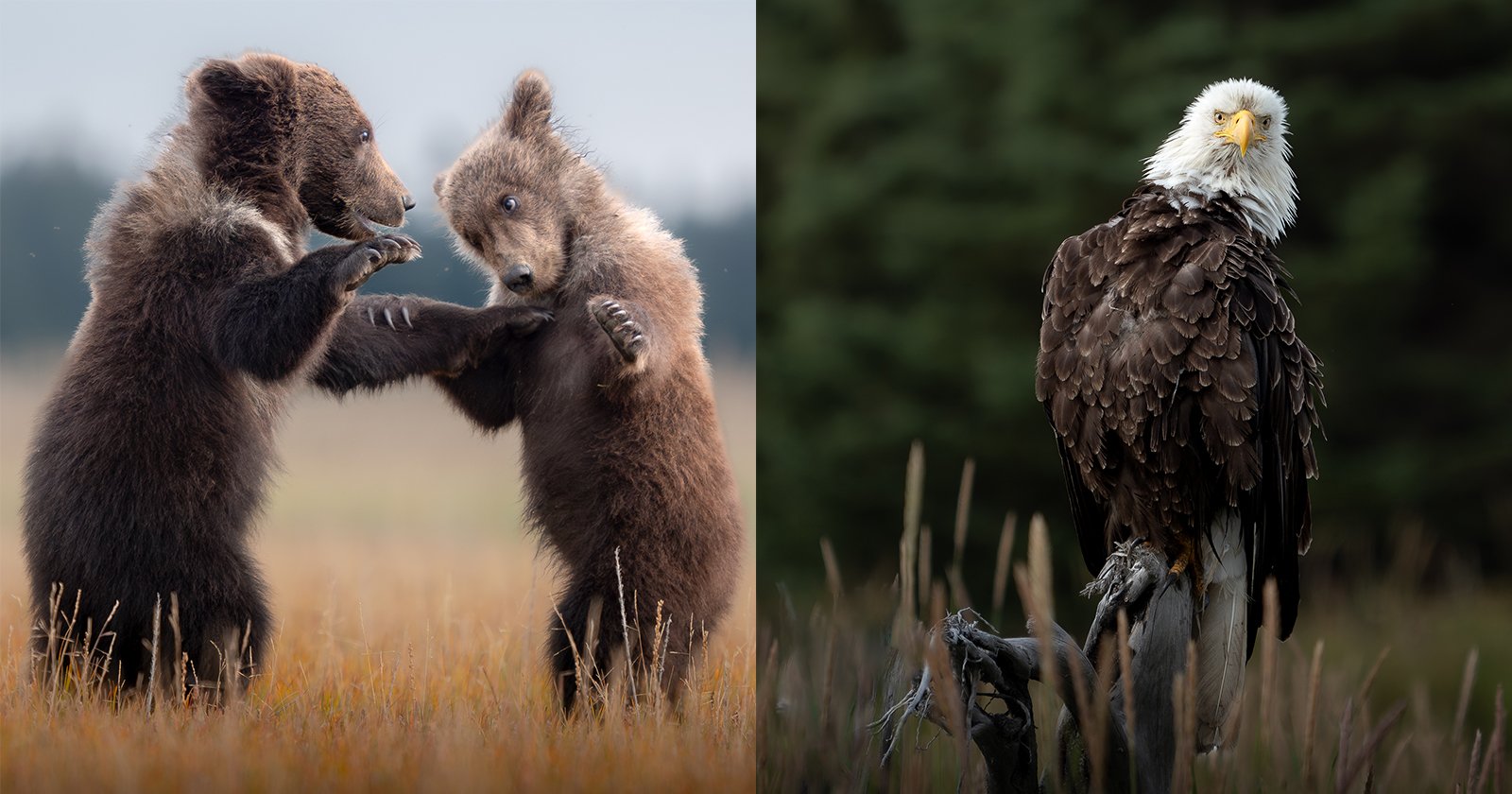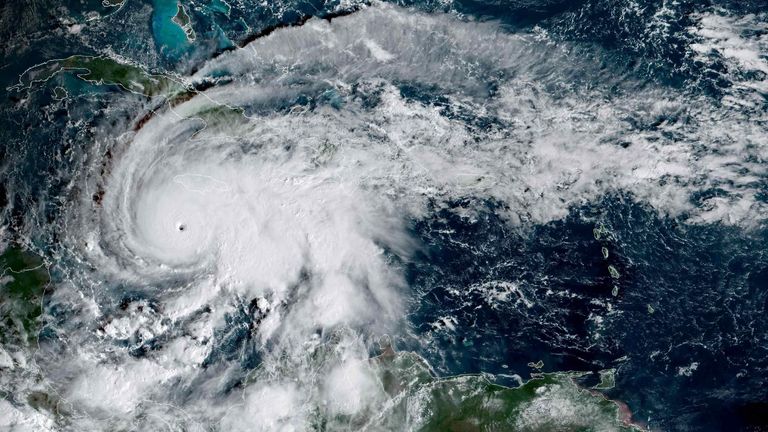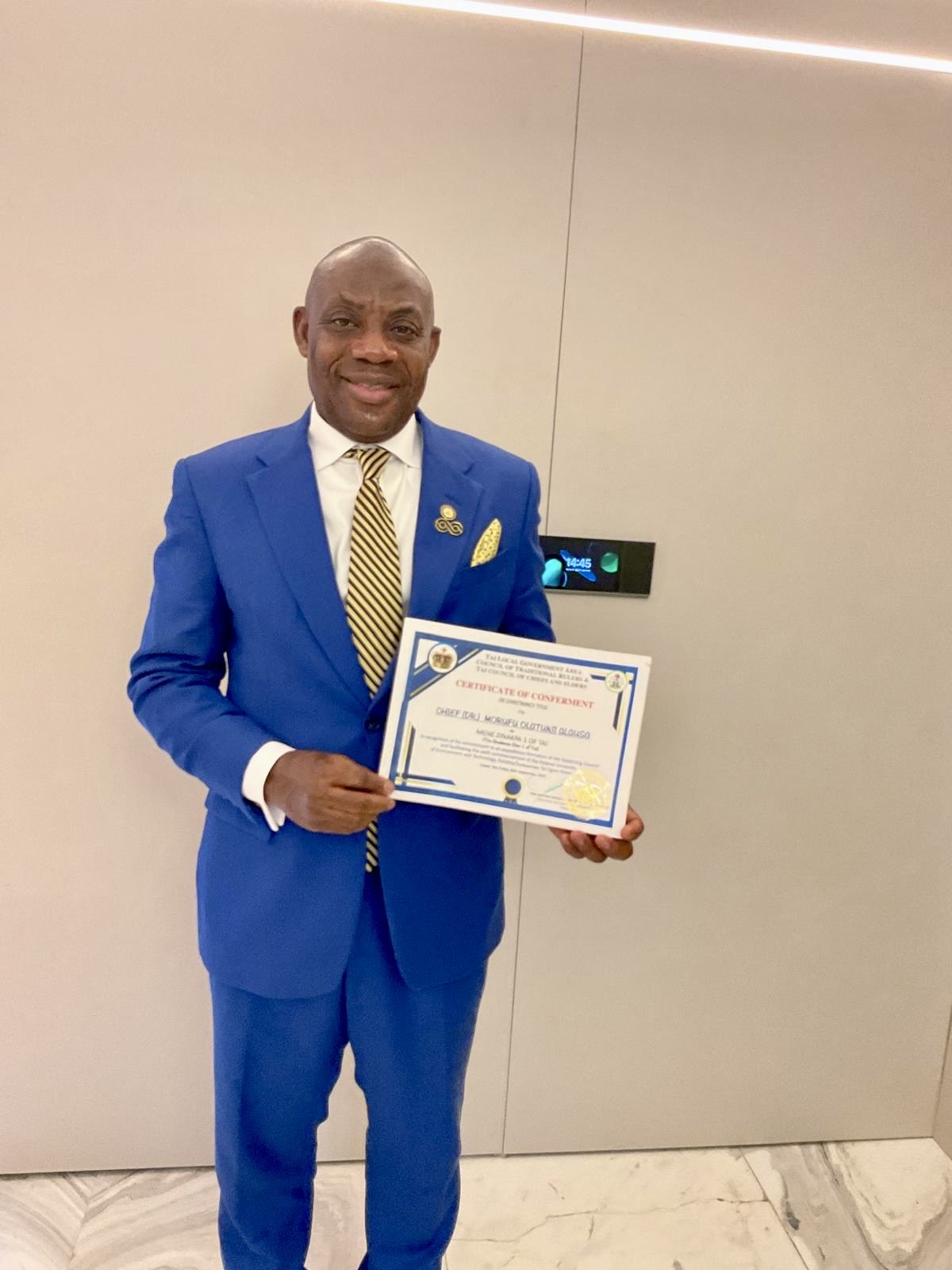Copyright PetaPixel

A crew working for an unnamed wildlife photographer fed and used cellophane paper to lure a fox for the ‘perfect shot’ in Grand Teton National Park. Since the fox was conditioned to human food, park officials euthanized it. The photographer got his shot. The fox paid with its life. Learning about this event became the North Star for Arthur Lefo, an OM SYSTEM Ambassador who has spent 14 years photographing iconic wildlife. Lefo believes that ethical wildlife photography isn’t just about rules, but respect. Full disclosure: This article was brought to you by OM SYSTEM “That fox incident transformed my entire approach to wildlife photography,” Lefo reflects. “It wasn’t about memorizing regulations. It was recognizing that every decision I make has consequences for the animal, for other photographers, and for future encounters. Ethical photography isn’t restrictive; it’s liberating. When you stop chasing shots and start observing behavior, you capture the moments that matter.” At a Glance Five Steps to Ethical Wildlife Photos 1. Observe First, Shoot Second. Take a few “insurance shots” from where you first spot the animal. Then lower your camera and watch for a few minutes. 2. Ask Yourself the Three Questions. This is your ethical compass: Is the animal showing stress signals? Am I blocking its resources or escape routes? Would I need to lie in a caption to hide how I captured the photo? 3. Confirm the Baseline Distance. Use the 100/25 Rule (100 yards for bears and wolves, 25 yards for all other wildlife) as a starting point. The animal’s behavior is the ultimate guide. 4. Let the Animal Decide the Encounter. The most incredible close-ups happen when an animal approaches you on its own terms. Never follow, chase, or corner wildlife. 5. When in Doubt, Back Out. If an animal stops feeding, resting, or grooming because of your presence, leave. A stressed animal is a failed encounter. The Three Simple Questions Always research the distance rules that vary by park and species. However, Lefo recommends three questions as the ethical baseline for your basis for your photography: 1. Is the animal showing stress signals? Watch for ears laid back, grunting, fixed stares, or stopping natural behavior. Two or more stress signals mean back away immediately. 2. Am I blocking its resources or escape routes? Never position yourself between an animal and water, food, cover, or escape paths. If you’re in the way, you’re too close. 3. Would I need to lie in my image caption to hide how I captured the photo? If you’d have to hide how you got the shot or exaggerate the distance, don’t take it. When the answer to question one is yes, or questions two or three reveal a problem, the decision is simple: adjust or leave. “The animal’s well-being always comes first,” Lefo insists. “No photo is worth stressing wildlife.” Reading the Signals: Three Scenarios from the Field Understanding ethics in theory is one thing. Recognizing the right decision in the field is another. The Approaching Moose (When to Stay Put) You’re photographing a bull moose 75 yards away in an open meadow. He’s grazing peacefully. After five minutes, he walks toward you, still grazing. Applying the Three Questions: No stress signals. Not blocking resources. You maintained your position; the moose chose the encounter. The Ethical Decision: Hold your position. Keep your camera ready, but don’t advance. If he stops grazing or shows stress signals, back away slowly while speaking calmly. The Takeaway: When an animal approaches you while maintaining natural behavior, it’s showing comfort with your presence. Let the animal make all distance decisions. The Grunting Bear (When to Leave Immediately) You are 120 yards from a grizzly bear fishing in a stream. You have been watching quietly for 10 minutes. The bear stops fishing, lifts its head, fixes on you, and grunts once. Applying the Three Questions: YES, clear warning signal. The bear has told you you’re too close, even though you are farther away than the 100 yard ‘rule’. The Ethical Decision: Back away immediately. That grunt is the bear’s first warning. Start moving slowly backward while speaking in a calm, low voice. Don’t turn your back or run. Increase your distance by an additional 20 yards. “A grunt is not a suggestion,” Lefo stresses. “It’s the bear telling you that you’ve crossed its comfort line. I stop everything. I do not take another photo. I back away slowly, making sure to never turn my back. I speak in a low, calm voice. I create an additional 20 yards of distance. If the bear grunts again, I leave completely.” The Takeaway: That first grunt is your chance to correct the situation before it becomes dangerous for both you and the bear. Ignoring it puts the bear at risk of relocation or euthanasia. Be grateful for the shots you got and leave on good terms. The Growing Crowd (When Your Presence is the Problem) You arrive at a roadside location where a bull moose is feeding. Five other photographers are present, all at respectful distances. The moose seems relaxed. Within 20 minutes, word spreads. The group grows to 15, then 20. People spread out for different viewing angles. The volume rises. What You Notice: The moose stops grazing. His head comes up. He scans the crowd instead of feeding. After a few minutes, he abandons his grazing area and walks into denser brush. Applying the Three Questions: YES to all three. Stopped feeding, scanning the crowd, abandoned habitat. Collectively, 20 people made him abandon his grazing area. The Ethical Decision: Even though you did nothing wrong individually, your presence is now part of a collective problem. Time to pack up and leave. The Takeaway: The animal doesn’t distinguish between individuals in a crowd. It just feels surrounded. Your departure reduces the total pressure and can be a signal to others in the crowd that it is their time to leave as well. Essential Gear for Ethical Photography Your Lens as an Ethical Tool Here’s the fundamental challenge facing every wildlife photographer: the need for frame-filling images that reveal detail and behavior, while maintaining distances that keep wildlife comfortable and undisturbed. Getting close enough for impactful compositions with standard lenses means crossing ethical boundaries and stressing your subjects. The physics of the problem are straightforward. A bear at the minimum ethical distance of 100 yards appears as a small figure in your frame with a standard 24-70mm equivalent lens. The natural response is to move closer until the composition works, but each step forward increases stress on the animal and danger to the photographer. The solution isn’t to get closer; it’s to extend your optical reach with telephoto magnification. “Do you need a $10,000 lens to capture great photographs ethically? No,” Lefo explains. “What you need is enough reach to maintain a respectful distance while still filling your frame. A lens with a 300mm equivalent view is a great starting point for most wildlife photography.” Understanding this reach requirement transforms your approach. “If you only have a 24-70mm equivalent lens and you see a bear 100 yards away, that lens isn’t going to be nearly enough, so you will naturally keep approaching until it fills your frame,” Lefo explains. “However, if you can fill the frame with a 24-70mm lens, you are much too close, not only for your safety, but also for the bear’s well-being.” “As I’ve developed more ethical practices, lens reach has become non-negotiable,” Lefo continues. “The M.Zuiko Digital ED 100-400mm F5.0-6.3 IS II lens on an OM SYSTEM Micro Four Thirds body gives me a 200-800mm focal range 35mm equivalent view. This magnification advantage is crucial.” OM SYSTEM’s Micro Four Thirds sensor has a 2x crop factor, meaning focal lengths are doubled compared to full-frame cameras. That 400mm lens becomes an 800mm equivalent, allowing intimate framing from distances that keep wildlife comfortable. “The system maintains this reach while remaining lightweight enough for me to carry all day, which is critical when ethical approaches require hiking to less-disturbed locations,” Lefo concludes. Weather Sealing Enables Ethical Positioning Ethical positioning requires equipment that performs reliably when conditions challenge your resolve. Weather presents photographers with a fundamental dilemma: maintaining the optimal ethical position for wildlife observation while protecting valuable equipment from the elements. When rain, snow, or dust arrives unexpectedly, the choice becomes whether to abandon a carefully established position that respects the animal’s comfort zone or risk equipment damage by staying in place. “Weather creates an ethical dilemma,” Lefo says. “Once I’ve found the right distance and angle, sudden rain or snow forces a decision: abandon the position to protect my gear, or stay and risk equipment failure. Before I had weather-sealed equipment, I would often have to leave during the most compelling moments simply to protect my camera.” Professional-grade weather sealing eliminates this compromise. “The OM SYSTEM OM-1 Mark II, when paired with an IP53-rated lens, has excellent weather sealing, which means I can focus on ethical positioning rather than protecting gear when conditions change suddenly,” Lefo continues. “I’ve shot in downpours, snowstorms, and dust storms without worrying about the camera. That reliability keeps me in the right position to not stress the animal, while still capturing incredible photos.” Silent Operation: An Essential Ethical Feature Mechanical shutter noise creates a double ethical problem that many photographers overlook. The obvious issue is direct disturbance: the click itself can startle wildlife at critical moments, particularly during sensitive behaviors like feeding, courtship, or caring for young. But the more insidious problem affects the photographer’s ability to practice ethical observation. Wildlife communicates stress through subtle auditory signals that serve as early warnings before visual body language becomes obvious. A moose’s grunt, a bear’s jaw clacking, or a bird’s alarm call tells you when you’ve crossed a comfort boundary. These sounds provide the opportunity to adjust your position before the animal’s stress escalates to flight or aggression. “You might not hear a moose grunting or a bear clacking its jaw if you have burst mode firing,” Lefo stresses. “The shutter noise drowns out the very signals I’m trying to listen for. I’ve seen photographers continue shooting while an animal gives multiple warning signals they simply can’t hear over their own camera.” Beyond personal awareness, acoustic pollution affects other photographers and wildlife. Each mechanical shutter click adds to the cumulative noise that transforms peaceful encounters into chaotic ones, particularly in popular locations where multiple photographers gather. The OM SYSTEM OM-1 Mark II’s completely silent electronic shutter eliminates both problems. “Being completely silent benefits you, the animals, and other photographers,” Lefo explains. “I can hear stress signals immediately, and I’m not contributing to acoustic pollution that turns peaceful encounters into chaotic ones.” Field Techniques for Ethical Photography The Pause and Shoot Rule “When I first spot an animal, I stop and watch from where I notice them,” Lefo states. “The excitement of spotting wildlife can override careful judgment, creating sudden movements that can spook animals.” “Modern telephoto lenses provide the reach to capture compelling images from where I first spot them,” Lefo explains. “The lightweight design of my setup, with the telephoto lens, allows me to assess the situation and start shooting immediately. My camera’s 7.5-stop image stabilization lets me shoot handheld at remarkably slow shutter speeds. Lefo explains that those first few photos are your insurance policy. “If the animal bolts, you still got something.” The Pause and Shoot Rule: 1. Stop where you first spot the animal 2. Take a few photos from that position 3. Assess behavior for two to three minutes 4. If animal seems relaxed, plan your move to your next photo angle 5. If animal shows stress, stay put or leave Anticipate, Don’t Follow Once you’ve established ethical distance through the Pause and Shoot approach, the next challenge is maintaining that ethical position as animals move. This requires shifting from reactive to predictive thinking. “Anticipating an animal’s path is key. I don’t follow them. I try to think ahead of where they might go and put myself in that position. If I am right and they approach on their own terms, I am inherently in a better ethical position.” Lefo always follows the ‘The One Exit Route Rule.’ “I never position myself between an animal and its escape path,” he says. “If I am blocking their way out, I’m too close.” The Drone Problem “There has been an increase in incidents regarding drones,” Lefo states. “I’m a drone owner and pilot, and I love my drone, but there are very few instances where using one around wildlife doesn’t disturb behavior.” Studies show that drones stress animals even when they appear calm: elevated heart rates, altered behavior, and abandoned territories. “Someone flew a drone at a mountain lion sitting on a kill in Grand Teton, and that spooked the lion off of a rare meal that the mountain lion had exerted lots of energy to get.” Lefo notes. “What seems like a minor issue to us can actually start a chain reaction that is incredibly dangerous for the animal. The lion might not have enough energy to return to its meal, or another animal might eat it before the lion returns. That means the lion used a lot of its valuable energy on the hunt, only to not recoup its energy with the meal.” “The aerial perspective rarely justifies the disruption a drone causes,” Lefo explains. “Coupled with the fact that many of the best locations are drone-free zones, there is almost no way to capture drone photos of wildlife both ethically and legally.” Your Car Is a Mobile Blind Animals tolerate vehicles better than people on foot, Lefo says. “In parks, roadside photography from your car is often the most ethical approach. Crack your window, rest your lens on a bean bag, and shoot. Don’t exit the vehicle; that changes the equation.” Never Bait or Lure “Understanding the difference between habituation and food conditioning is critical,” Lefo stresses. “An animal that tolerates human presence is very different from one that expects food. An animal used to cars on a park road is one thing; an animal that approaches people for a handout is dangerous for everyone.” Reading Stress Signals: A Species Guide Species knowledge allows photographers to spot stress signals before causing harm. “Reading those signals early is critical for both your safety, as well as the animal’s,” Lefo emphasizes. Bear Stress Signals “Bears communicate discomfort through clear warning signals that escalate with their stress level,” Lefo explains. “The first warning is usually grunting or jaw clacking. When a bear stands on its hind legs, most people panic, but it’s actually just assessing the situation, trying to get a better view and catch your scent. That’s not aggression; that’s information gathering.” The danger signs are different. “If you see swaying head movements or hear their jaw clacking, stress levels are dangerously high,” Lefo stresses. “Two or more stress signals mean back away immediately. The bear is telling you you’ve crossed a line.” Moose Stress Signals “Moose are deceptively calm until they’re not,” Lefo notes. “They signal stress through ears laid flat against their head, or by stopping mid-graze to stare directly at you. Raised hackles (hair standing up) along the back indicate heightened alert.” The critical warning is a behavioral shift. “If a moose starts licking its lips or lowering its head toward you, it’s preparing to charge,” Lefo cautions. “That’s your last chance to create distance before it decides you’re a threat worth addressing.” Bird Stress Signals “Birds telegraph their discomfort through posture changes and vocalizations,” Lefo explains. “They shift from relaxed, rounded body positions to alert, elongated postures when uncomfortable. They vocalize alarm calls. Most importantly, if a bird flies away from you once and it’s a reaction to your presence, that’s your signal to retreat.” The One-Flush Rule for Birds “Flushing a bird from its position wastes critical energy it needs for nesting, migration, or surviving the cold,” Lefo emphasizes. “I follow the One-Flush Rule strictly: if a bird takes flight because of my approach, I’ve crossed its comfort zone. I don’t follow it. I don’t try for a second chance. I retreat immediately. One flush is a mistake; a second flush is harassment.” Universal Stress Indicators “Across all species, certain behaviors are universal warnings,” Lefo stresses. “Animals stop their natural activities to focus on you. They maintain fixed stares rather than returning to normal behavior. They reposition to watch you continuously or move away from their preferred habitat. When you see these patterns, the animal is telling you everything you need to know.” Your First Ethical Wildlife Shoot Choose Your Location: Start at a state park with posted wildlife viewing areas. These locations are designed for observation, with animals somewhat habituated to respectful human presence. Prepare Your Gear: Bring binoculars. A 300mm lens (or equivalent) is enough. Use your car as a blind. Bring extra camera batteries and memory cards. “The OM SYSTEM OM-1 Mark II’s battery life supports extended observation sessions.” Lefo says. “However, I always have multiple back up batteries on me. If I have to leave my position to return to the car to get a new battery, that opens up another chance that my movements might stress the wildlife.” Limit Movements: Shoot from your initial vantage point. Don’t move closer. This builds patience and teaches you to work with what you have. Take Your Three Insurance Shots: As soon as you spot the animal, take three photos from where you stand. Observe First: After you take your insurance shots, watch the animal for three minutes. What is it doing? How does it move? What would signal stress? Apply the Three Questions: Before every adjustment, ask: 1) Is the animal showing stress signals? 2) Are you blocking the animal’s access to resources or its escape route? 3) Would you have to hide how you captured the photo in your caption when posting? If any answer is problematic, adjust or leave. Practice the Five-Minute Check: Every five to 10 minutes, lower your camera and reassess. Is the animal still relaxed? Are you blocking its path? “Your first outing might not produce portfolio shots,” Lefo stresses. “That’s not the goal. You’re building observation skills and developing the patience that separates ethical photographers from those who push too hard.” Sharing Responsibly: How to Write an Honest Caption “Your photo tells a story, but your caption teaches other photographers how to behave,” Lefo emphasizes. “That’s why I always include key elements in my captions, like the lens I used and context behind the photo.” Before: The Misleading Hype “Got up close and personal with this beautiful bull moose this morning!” After: The Educational Context “An incredible morning watching this bull moose from over 80 yards away. I used the M.Zuiko Digital ED 50-200mm F2.8 IS PRO lens from my car, which acts as a blind, and he was completely undisturbed while grazing. Telephoto compression makes him look closer than he was!” Your Three-Point Caption Checklist: 1. State Your Distance & Lens: “Shot with a 500mm lens from 100 yards.” 2. Describe the Situation: Explain how the encounter happened. Did the animal approach you? Were you in a vehicle? 3. Describe Behavior, Don’t Add Emotion: Avoid giving animals human emotions. Stick to what you can see. Before You Go: Research and Respect Creating universal rules is tempting, but ethical practice requires nuance. Every environment, species, and individual animal demands different considerations. “A grizzly that’s comfortable with your presence one day might be stressed or protecting a meal the next,” Lefo says. “Reading those signals in real time matters more than following rigid distance rules.” This is why the three questions matter: they adapt to every context. Regulations tell you the legal minimum distance; the animal’s behavior tells you the ethical distance. Understanding Local Context “Anytime I go somewhere to photograph, I make sure to do plenty of research,” Lefo explains. “I need to know where animals are protected, where they’re hunted, places where they’re used to seeing people, and where they’re not. All of these environmental factors change how I approach the situation.” Context also shapes safety considerations. “I’ve seen photographers park on highway shoulders, much to close and forcing a pronghorn to bolt across two lanes of traffic traveling at 75 mph,” Lefo describes. “Some locations, no matter how compelling the subject, are simply not appropriate or safe.” Respecting the Rules “The foundation is straightforward: respect local regulations,” Lefo insists. “Always verify minimum distance regulations for the area you are visiting. Yellowstone requires 100 yards from bears and wolves, and 25 yards from other wildlife. Grand Teton matches Yellowstone, but many state parks have no posted minimums. When in doubt, use the 100/25 rule as your baseline.” Remember: legal distances vary by park and region. Always check official regulations before you go, as the ethical distance is often greater than the legal minimum. Restricted access demands creative problem-solving. “If you can’t walk into an area and there’s an animal out there, you’ll have to get creative with your zoom lens,” Lefo notes. Don’t break branches or move objects for a “cleaner” shot. Instead, Lefo says, do your cleanup in post-production. “The power of editing software these days is incredible. It’s easy to eliminate unwanted objects in your frame, so there is no excuse to disturb the environment.” Check state and park websites for species-specific behavior guides. Alaska Department of Fish and Game and National Park Service wildlife pages offer free resources. Before heading into the field, spend a day at a quality zoo or wildlife sanctuary. Practice reading body language, tracking movement through your viewfinder, and adjusting settings quickly. The stakes are lower, the practice is invaluable. Critical Timing: Breeding and Nesting “Especially during mating season, birds are preoccupied with their young, trying to tend to them and collect food,” Lefo explains. “Any animal with young offspring requires extra caution.” The golden rule for nesting birds: If you can see eggs or chicks clearly, you’re too close. If you’re using a photography blind, set it up at least two weeks before nesting season so birds habituate to the structure. Never construct a blind after birds have nested; the disruption can cause nest abandonment. If you discover a nest accidentally, back away immediately and do not return. Species-specific timing varies significantly. Eagles and ospreys nest from March through July. Songbirds breed from April through August, though timing varies by species. Waterfowl breed and molt from May through September. Large mammals give birth in spring and enter rutting season in fall. Check eBird.org or local Audubon chapters for your region’s specific nesting calendars. Printable Field Checklist Before You Approach: Five-Step Safety & Ethics Check □ OBSERVE FIRST: Stop where you spot the animal. Take three photos. Watch behavior for two to three minutes. □ CHECK STRESS SIGNALS: Ears back? Grunting? Alarm calls? Fixed stare? If you see two or more signals, stay put or leave. Do not approach. □ VERIFY EXIT ROUTES: Are you blocking access to water, food, cover, or escape paths? If yes, reposition or leave. □ ASSESS YOUR MINDSET: Are you chasing one specific shot? Reset to observation mode. □ COUNT THE CROWD: Are there 10 or more people present? Consider leaving. The Three Questions: 1. Is the animal showing stress signals? 2. Am I blocking its resources or escape routes? 3. Would I need to hide how I captured the shot in my photo caption? Stress Signals Quick Reference: Bears: grunting, jaw clacking, swaying head Moose: ears back, raised hackles, stopping to stare Birds: alert posture, alarm calls, flushing once (One-Flush Rule) All: stopping natural behavior, fixed stare, moving away Universal Rules: Use silent shutter mode Lower your camera every five to 10 minutes Never feed, bait, or lure wildlife Respect nests and breeding areas Follow local distance regulations Leave when your presence changes behavior Final Thoughts Ethical photography is patience in practice. It’s the commitment to read the signals, give more space than you think you need, and have the courage to walk away when an animal’s behavior changes. That restraint protects the wildlife in front of your lens and preserves the encounter for everyone who comes next. “The encounters are still there,” Lefo concludes. “Grizzlies fishing, wolves hunting, owls at dusk. Those moments exist because photographers before us chose restraint. Every time we honor an animal’s stress signals, we protect the next photographer’s chance to witness the same wonder. I often wonder how many incredible, and ethical, photos could have been captured of that fox that had to be euthanized had it been allowed to live as a wild animal. Unfortunately, poor ethical decisions robbed the fox of its life, and photographers the opportunity to safely witness it.” More from Arthur Lefo can be found on his website, Facebook, and Instagram. Full disclosure: This article was brought to you by OM SYSTEM



